
In September 2022 Oxbow's bookshop and distribution buisness merged with Pen & Sword Books, a family run independent publisher of history books. The book distribution aspect of our business will continue to bring you some of the best books in the field of archaeology and related disciplines as Casemate UK. The Oxbow Books publishing imprint remains as a separate entity, still sold and distributed exclusively by us.

Format: Paperback
Pages: 416
ISBN: 9781905119455
Pub Date: 07 Feb 2013
Illustrations: 233 illus
Description:
An original and approachable account of how archaeology can tell the story of the English village. Shapwick lies in the middle of Somerset, next to the important monastic centre of Glastonbury: the abbey owned the manor for 800 years from the 8th to the 16th century and its abbots and officials had a great influence on the lives of the peasants who lived there. It is possible that abbot Dunstan, one of the great reformers of tenth century monasticism directed the planning of the village.
The Shapwick Project examined the development and history of an English parish and village over a ten thousand-year period. This was a truly multi-disciplinary project. Not only were a battery of archaeological and historical techniques explored - such as field walking, test-pitting, archaeological excavation, aerial reconnaissance, documentary research and cartographic analysis - but numerous other techniques such as building analysis, dendrochronological dating and soil analysis were undertaken on a large scale. The result is a fascinating study about how the community lived and prospered in Shapwick. In addition we learn how a group of enthusiastic and dedicated scholars unravelled this story. As such there is much here to inspire and enthuse others who might want to embark on a landscape study of a parish or village area. Seven of the ten chapters begin with a fictional vignette to bring the story of the village to life. Text-boxes elucidate re-occurring themes and techniques. Extensively illustrated in colour including 100 full page images.This title was the winner of the 2014 British Archaeological Association's Best Archaeological Book Award.
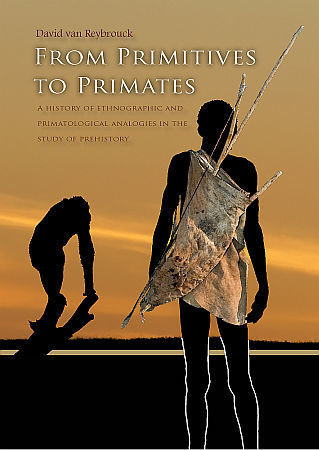
Format: Paperback
Pages: 384
ISBN: 9789088900952
Pub Date: 31 Jan 2013
Description:
Where do our images about early hominids come from? In this fascinating in-depth study, David Van Reybrouck demonstrates how input from ethnography and primatology has deeply influenced our visions about the past from the 19th century to this day – often far beyond the available evidence. Victorian scholars were keen to look at contemporary Australian and Tasmanian aboriginals to understand the enigmatic Neanderthal fossils.
Likewise, today’s primatologists debate to what extent bonobos, baboons or chimps may be regarded as stand-ins for early human ancestors. The belief that the contemporary world provides ‘living links’ still goes strong. Such primate models, Van Reybrouck argues, continue the highly problematic ‘comparative method’ of the Victorian times. He goes on to show how the field of ethnoarchaeology has succeeded in circumventing the major pitfalls of such analogical reasoning.A truly interdisciplinary study, this work shows how scholars working in different fields can effectively improve their methods for interpreting the deep past by understanding the historical challenges of adjacent disciplines.Overviewing two centuries of intellectual debate in fields as diverse as archaeology, ethnography and primatology, Van Reybrouck’s book is one long plea for trying to understand the past on its own terms, rather than as facile projections from the present.David Van Reybrouck (Bruges, 1971) was trained as an archaeologist at the universities of Leuven, Cambridge and Leiden. Before becoming a highly successful literary author (The Plague, Mission, Congo…), he worked as a historian of ideas. For more than twelve years, he was co-editor of Archaeological Dialogues. In 2011-12, he held the prestigious Cleveringa Chair at the University of Leiden.
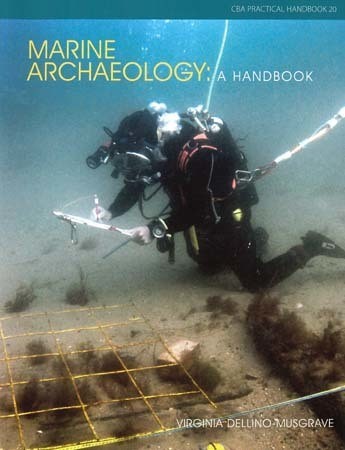
Format: Paperback
Pages: 110
ISBN: 9781902771915
Pub Date: 31 Jan 2013
Series: CBA Practical Handbook
Description:
Marine Archaeology: A Handbook aims to give easy access to a range of information about the marine historic environment. It provides a useful guide for all those involved in the marine environment, from local authorities to recreational divers and interested amateurs. In recent years there has been increased awareness of both the potential and the fragility of the marine and maritime zones.
Working in these zones presents a range of challenges, from the practical to the legal, which this Handbook attempts to explain.The book begins by defining what the marine environment is, and provides a brief history of maritime archaeology. It also considers the challenging question of the differences between marine archaeology and commercial salvage. Further chapters explain the organisation of marine archaeology in the UK and the planning of marine archaeological projects, with essential information on areas of responsibility and sources of information. A summary of the complex legal framework for the management of the marine zone around the UK is followed by discussion of European and UNESCO conventions on marine heritage. A glossary and extensive bibliography make this book essential reading for all amateurs and professionals with an interest in our marine historic environment.
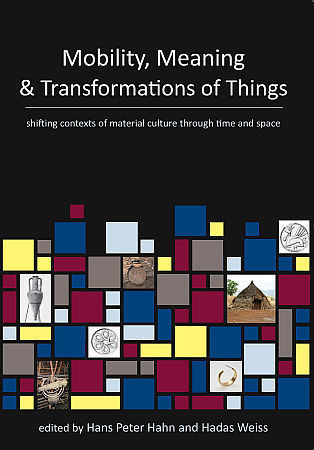
Format: Paperback
Pages: 176
ISBN: 9781842175255
Pub Date: 31 Jan 2013
Illustrations: b/w illus
Description:
Things travel around the globe: they are shipped as mass consumer goods, or transported as souvenirs or gifts. There are infinite ways for things to be mobile, not only in the era of globalisation but since the beginning of time, as the earliest traces of long distance trading show. This book investigates the mobility of things from archaeological and anthropological perspectives.
Material Objects are characterised by temporal continuity, embodying a prior existence with lingering effects. Yet the material continuity disguises the transformations they may undergo, which only become evident upon closer examination. Objects are in perpetual flux, leaving visible traces of their age, usage, and previous life. While travelling through time, objects also circulate through space, and their spatial mobility alters their meaning and use with respect to new cultural horizons. As objects transform through time and space, so does the value attributed to them. Mapping out itineraries of value in the realm of the material, allows us to grasp the nature of a given social formation through the shape and meaning taken on by its valued 'stuff'. It also provides insights into the nature of materiality, through the value ascribed to objects at a given point in time and space. This edited volume brings together studies of material culture, materiality and value, with regard to the mobility of objects, with the aim of tracing the ways in which societies constitute their valued objects and how the realm of the material reflects upon society.
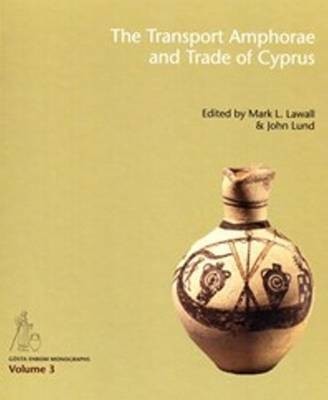
Format: Hardback
Pages: 244
ISBN: 9788771242133
Pub Date: 31 Jan 2013
Description:
Placed as a stepping stone on the sea route between Europe and the New East, Cyprus has always been a meeting place of many cultures. Though rarely united politically through many millennia of history - and for extended periods subject to foreign rule - the island nonetheless managed to maintain specific and unique identities. This publication seeks to throw new light on important aspects of the economy of Cyprus between c.
700 BC and AD 700 through a concerted study of the transport amphorae found in and around the island. These standardised containers of fired clay were commonly used for shipping foodstuffs from their places of production to the consumers in antiquity. Completely preserved or found only in fragments, such vessels are a prime source of information about the island's exports and imports of agricultural products, and ultimately about the fluctuations in the economy of Cyprus through a crucial millennium and a half of her history. The jars thus contribute both to our understanding of the changing intensities of Cypriot connections with other centres around the Mediterranean and to the documentation of regional patterning within the island itself.
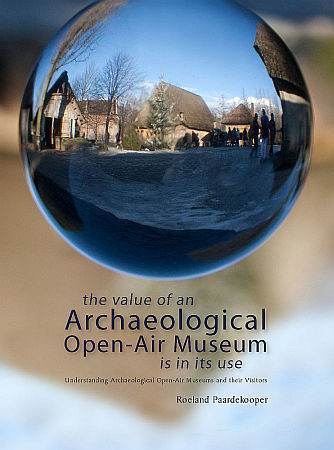
Format: Paperback
Pages: 300
ISBN: 9789088901034
Pub Date: 31 Jan 2013
Description:
There are about 300 archaeological open-air museums in Europe. Their history goes from Romanticism up to modern-day tourism. With the majority dating to the past 30 years, they do more than simply present (re)constructed outdoor sceneries based on archaeology.
They have an important role as education facilities and many showcase archaeology in a variety of ways. Compared to other museum categories, archaeological open-air museums boast a wide variety of manifestations.This research assesses the value of archaeological open-air museums, their management and their visitors, and is the first to do so in such breadth and detail. After a literature study and general data collection among 199 of such museums in Europe, eight archaeological open-air museums from different countries were selected as case studies. They included museums in a very varied state with different balances between public versus private funding levels on the one hand, and on the other the proportion of private individuals to educational groups among their visitors.The issue of ‘quality’ was investigated from different perspectives. The quality as assessed by the museum management was recorded in a management survey; the quality as experienced by their visitors was also recorded using a survey. In addition on-site observations were recorded. Management and visitors have different perspectives leading to different priorities and appreciation levels.The studies conclude with recommendations, ideas and strategies which are applicable not just to the eight archaeological open-air museums under study, but to any such museum in general. The recommendations are divided into the six categories of management, staff, collections, marketing, interpretation and the visitors. They are designed to be informative statements of use to managers across the sector.
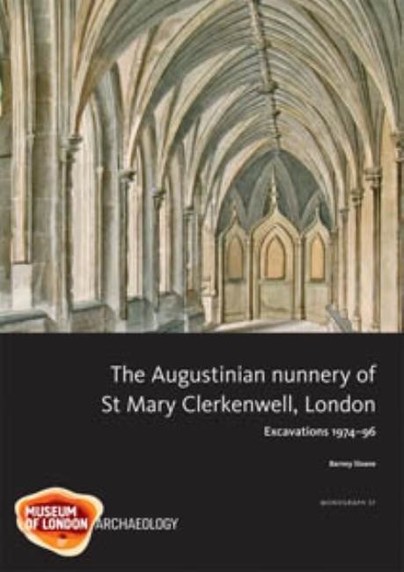
Format: Hardback
Pages: 300
ISBN: 9781901992045
Pub Date: 29 Jan 2013
Series: MoLAS Monograph
Description:
The development of the nunnery site is revealed in this study - from evidence for Iron Age occupation, the nunnery's foundation in 1144 and the expansion of the early convent, through to its conversion in the 16th and 17th centuries to a close of large mansions surrounding the parish church. Drawing together the varied evidence, including illustrations made during the demolition of the nunnery church in 1788-9 and 18th-century surveys, has allowed detailed reconstructions of the church and cloister. Relatively wealthy, located in Londons medieval suburbs and with a dual role as convent and parish church, St Marys story contrasts with that of many other, poorer and more rural, nunneries.

Format: Hardback
Pages: 200
ISBN: 9781842174890
Pub Date: 11 Jan 2013
Illustrations: 8 colour & 82 b/w illustrations
Description:
In the past, textile production was a key part of all ancient societies. The Ancient Near East stands out in this respect with the overwhelming amount of documentation both in terms of raw materials, line of production, and the distribution of finished products. The thirteen intriguing chapters in Textile Production and Consumption in the Ancient Near East describe the developments and changes from household to standardised, industrialised and centralised productions which take place in the region.
They discuss the economic, social and cultural impact of textiles on ancient society through the application of textile tool studies, experimental testing, context studies and epigraphical as well as iconographical sources. Together they demonstrate that the textile industries, production, technology, consumption and innovations are crucial to, and therefore provide an in-depth view of ancient societies during this period. Geographically the contributions cover Anatolia, the Levant, Syria, the Assyrian heartland, Sumer, and Egypt.
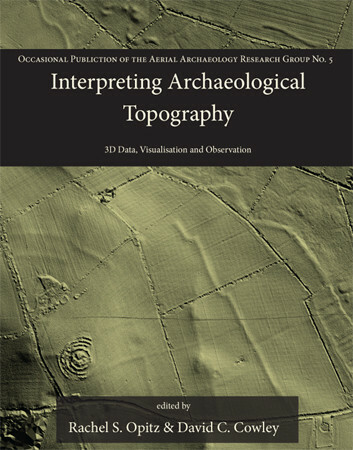
Format: Hardback
Pages: 288
ISBN: 9781842175163
Pub Date: 08 Jan 2013
Illustrations: 185 col illus
Description:
Airborne Laser Scanning (ALS), or lidar, is an enormously important innovation for data collection and interpretation in archaeology. The application of archaeological 3D data deriving from sources including ALS, close-range photogrammetry and terrestrial and photogrammetric scanners has grown exponentially over the last decade. Such data present numerous possibilities and challenges, from ensuring that applications remain archaeologically relevant, to developing practices that integrate the manipulation and interrogation of complex digital datasets with the skills of archaeological observation and interpretation.
This volume addresses the implications of multi-scaled topographic data for contemporary archaeological practice in a rapidly developing field, drawing on examples of ongoing projects and reflections on best practice.Twenty papers from across Europe explore the implications of these digital 3D datasets for the recording and interpretation of archaeological topography, whether at the landscape, site or artefact scale. The papers illustrate the variety of ways in which we engage with archaeological topography through 3D data, from discussions of its role in landscape archaeology, to issues of context and integration, and to the methodological challenges of processing, visualisation and manipulation. Critical reflection on developing practice and implications for cultural resource management and research contextualize the case studies and applications, illustrating the diverse and evolving roles played by multi-scalar topographic data in contemporary archaeology.
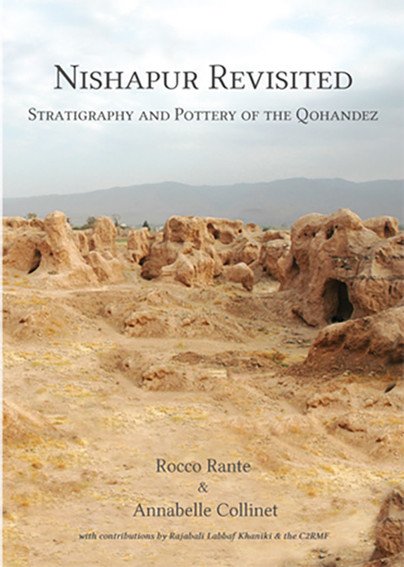
Format: Hardback
Pages: 144
ISBN: 9781842174944
Pub Date: 08 Jan 2013
Illustrations: 105 col illus.
Description:
Nishapur in eastern Iran was an important Silk Road city, its position providing links to central Asia and China, Afghanistan and India, the Persian Gulf and the west. Despite previous excavations there are many unresolved questions surrounding the site; when was the city founded? Is Nishapur a Sasanian city?
Was it founded by the Sasanian king Shapur I or II? The question of chronology of occupation and the ceramic sequence is also problematic particularly for late antiquity and the medieval period, as well as a complete topography of the site. The Irano-French archaeological mission at Nishapur (2004 to 2007) (CNRS-MAEE-Musée du Louvre) focused on the Qohandez, or citadel, the oldest part of Nishapur. Excavations were conducted in different areas of the mound, in order to address these questions. After an introduction to the site and the former American and Iranian excavations, this book presents the stratigraphy and the pottery of the site. The difficulties involved in establishing a precise history of the site, as well as the complexities of studying the pottery led to a program of analysis undertaken by the Research Centre of French Museums (C2RMF). Chemical and petrographic analysis, thermoluminescence (TL) dating and archaeomagnetism analysis as support to the TL results were done. A pottery database has been created regrouping the stratigraphical and laboratory analyses data, in order to manage and present an organised corpus of 1000 samples. The combination of the data from the stratigraphical and laboratory analyses gives an accurate and completely new chronology of the site. Moreover, the study also brought to light a new typological sequence of the ceramic, as well as new data about the pottery production at Nishapur.
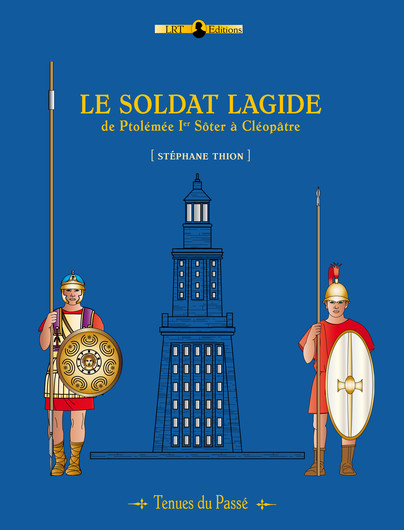
Format: Paperback
Pages: 64
ISBN: 9782917747100
Pub Date: 01 Jan 2013
Series: Tenues du Passé
Illustrations: 37 colour plates
Description:
Hellenistic Egypt, with its many papyrus preserved by the dry climate, is the natural starting point for studies of Alexander the Great’s successors’ institutions. No other Hellenistic kingdom has as many sources, even in the military field. This book details the Ptolemaic organization and equipment over the period covering the 3rd to the 1st century BC.
In an effort to bring the Ptolemaic soldier back to life, 37 plates illustrate the text, most of which were made from steles and mosaics found in Egypt.
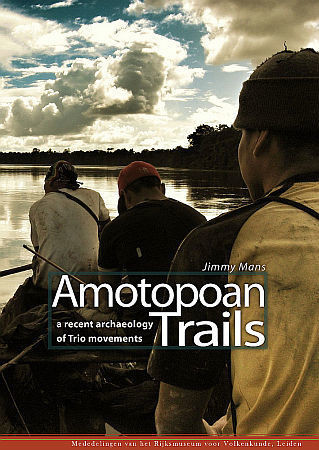
Format: Paperback
Pages: 330
ISBN: 9789088900983
Pub Date: 31 Dec 2012
Description:
In this book the concept of mobility is explored for the archaeology of the Amazonian and Caribbean region. As a result of technological and methodological progress in archaeology, mobility has become increasingly visible on the level of the individual. However, as a concept it does not seem to fit with current approaches in Amazonian archaeology, which favour a move away from viewing small mobile groups as models for the deeper past.
Instead of ignoring such ethnographic tyrannies, in this book they are considered to be essential for arriving at a different past. Viewing archaeological mobility as the sum of movements of both people and objects, the empirical part of Amotopoan Trails focuses on Amotopo, a small contemporary Trio village in the interior of Suriname. The movements of the Amotopoans are tracked and positioned in a century of Trio dynamics, ultimately yielding a recent archaeology of Surinamese-Trio movements for the Sipaliwini River basin (1907-2008). Alongside the construction of this archaeology, novel mobility concepts are introduced. They provide the conceptual footholds which enable the envisioning of mobility at various temporal scales, from a decade up to a century, the sequence of which has remained a blind spot in Caribbean and Amazonian archaeology.

Format: Hardback
Pages: 330
ISBN: 9781842175071
Pub Date: 31 Dec 2012
Description:
Although the Assyrian kingdom that dominated the Ancient Near East between the ninth and seventh centuries BC had a rich material culture, attested particularly by the distinctive stone wall reliefs and colossal gateway figures, practically nothing is known about Assyrian metalwork. There has been no previous survey of this subject, largely because most of the material was not accessible. This volume makes available for the first time a vast amount of previously unpublished metalwork, much of it from the Assyrian capital city of Nimrud, excavated first by Sir Henry Layard between 1845 and 1851 and then by the British School of Archaeology in Iraq between 1949 and 1963.
It emerges that Assyria had a thriving metalworking industry probably superior to any contemporary state in the region, and was producing large quantities of sophisticated bronze and ironwork, of high technical quality and sometimes elaborately decorated. This book will therefore be of interest to archaeologists, art historians and metallurgists. It is the publication of a PhD thesis that was successfully submitted in 1979. It is published here in its original form in order to make the large amount of primary data that it contains available to a wider circle of scholars.
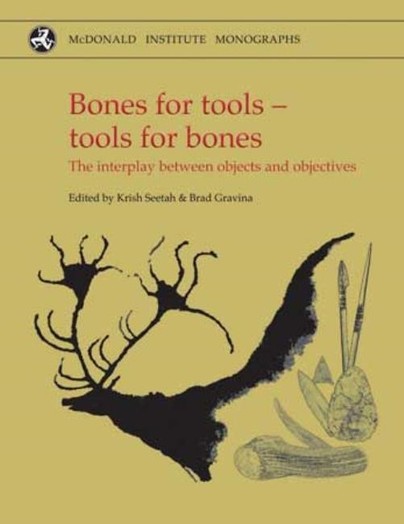
Format: Hardback
Pages: 164
ISBN: 9781902937595
Pub Date: 31 Dec 2012
Illustrations: 99 b/w figs, 26 tables
Description:
Animal procurement and tool production form two of the most tightly connected components of human behaviour. They are tied to our emergence as a genus, were fundamental to the dispersal of our species, and underpin the development of our societies. The interaction between these fundamental activities has been a subject of archaeological inference from the earliest days of the discipline, yet the pursuit of each has tended to encourage and entrench specialist study.
As a result, our understanding of them has developed in full-view but in general isolation of one from the other. This volume begins the process of integrating what have all too often become isolated archaeological and interpretative domains. Exposing and exploring contexts spanning much of prehistory, and drawing data from a wide range of environmental settings, the book covers both sides of the complex inter-relationship between animals, the technologies used to procure them and those arising from them. In taking a more inclusive approach to the material, technological and social dynamics of early human subsistence we have returned to the earliest of those archaeological associations: that between stone tools and animal bones. In revealing the inter-dependence of their relationship, this volume takes what we hope will be a first step towards a revitalized understanding of the scope of past interactions between humans and the world around them.Krish Seetah is Assistant Professor in the Department of Anthropology, Stanford University. His zooarchaeological research focuses on butchering and the socio-economic context of food.Brad Gravina is a member of the laboratory Préhistoire a l'Actuel: Cultures, Evironment et Anthropologie (PACEA) at the University of Bordeaux. His research focuses on the final Middle Palaeolithic of Western Europe with an emphasis on lithic technology and taphonomy.
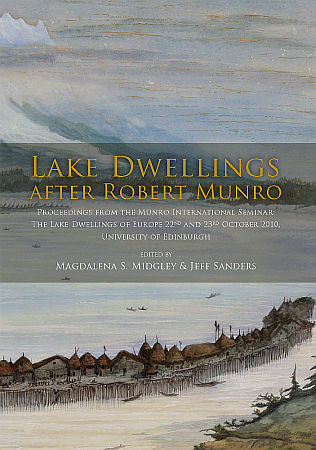
Format: Paperback
Pages: 190
ISBN: 9789088900921
Pub Date: 31 Dec 2012
Description:
Dr Robert Munro (1835-1920) was a distinguished medical practitioner who, in his later life, became a keen archaeologist. His particular interests lay in the lake-dwelling settlements of his native Scotland, known as crannogs, as well as those then being discovered across Europe. In 1885 Robert Munro undertook a review of all lacustrian research in Europe, travelling widely to study collections and visit sites.
The results of this work formed the basis for the prestigious Rhind Lectures at the Society of Antiquaries of Scotland in 1888. These were then published as The Lake-Dwellings of Europe, a landmark publication for archaeology and one that cemented Munro’s archaeological reputation.In 1910 Robert Munro offered the University of Edinburgh a financial gift with which to fund lectures in Anthropology and Prehistoric Archaeology. Over the past century this has been done through the Munro Trust. In 2010, the year of the centenary of the Munro Trust, the University of Edinburgh and the Society of Antiquaries of Scotland jointly celebrated the occasion with a gathering of Continental and British scholars. The papers presented in this publication are the results of that international seminar.This book will engage all those interested in European lake dwellings, wetland archaeology and the history of archaeology in the 19th century. The collected papers explore the historical context of Munro’s work, as well as introducing current research from across Europe. The book will appeal to both the professional and the interested amateur, of which Munro himself represented such an exciting synthesis.
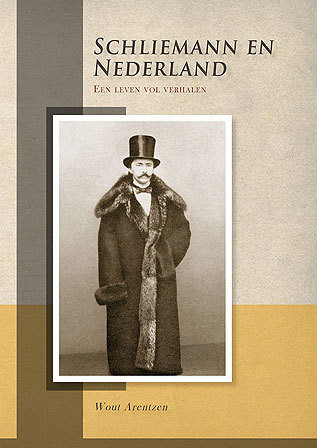
Format: Paperback
Pages: 300
ISBN: 9789088900914
Pub Date: 31 Dec 2012
Description:
This book describes the life of the famous archaeologist and shrewd trader Heinrich Schliemann (1822-1890) from a Dutch perspective since his commercial succes started in the Netherlands. We see how two myths meet: the myth of the ancient city Troy and the the myth of the poor boy that was determined to find the remains of this legendary city.Dutch text.

















